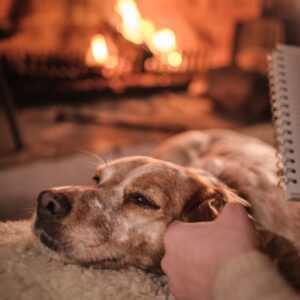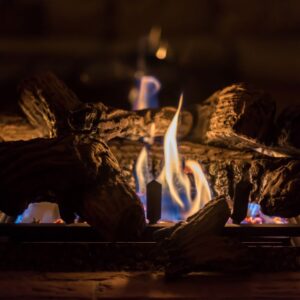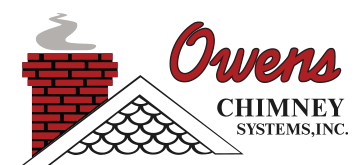 Imagine getting home from a long day at work, pouring a glass of wine, putting on your pajamas, and settling down with your favorite book in front of a warm flickering fire from your gas fireplace. Now imagine that your system isn’t working right. It’s a bummer, huh?
Imagine getting home from a long day at work, pouring a glass of wine, putting on your pajamas, and settling down with your favorite book in front of a warm flickering fire from your gas fireplace. Now imagine that your system isn’t working right. It’s a bummer, huh?
Like any home appliance, issues and problems can occur with your gas unit leading to headaches and frustrations – and with a gas fireplace, these issues can turn into dangerous problems if not addressed. However, with a little preventative maintenance and some knowledge of what to look for, all problems can be avoided and headed off before they become costly and dangerous dilemmas.
At Owens Chimney System, we take the safety of our clients seriously. That is why we are providing you with some hints and tips on keeping your gas fireplace safer and working at its most efficient.
Common Gas Fireplace Problems
- Faulty Gas Valve: If you experience difficulty starting and maintaining the flames in your fireplace, you may have a faulty gas valve. This valve controls the flow of gas from your main gas line into your gas fireplace. If it isn’t working right, you will experience issues.
- Pilot Light Issues: The pilot light is the flame that ignites the gas that flows into your fireplace. If it is unlit or isn’t staying lit it could mean a problem with your gas supply, thermocouple, or ignition system.
- Delayed Ignition: If there is a delay between when you turn the fireplace on and the flames actually igniting, it could mean that your ignition switch is faulty or that your burner is clogged. You should see and hear the gas igniting all at once (with a whoosh sound).
- Incomplete Combustion: The flames in your gas fireplace should be blue with a yellow tip. Flames that are fully yellow and orange indicate incomplete combustion. This is when the gas that is flowing out isn’t completely burning off. Clogged burner ports, dirty components, or improper air-to-gas ratios could be at fault.
- Strange Odors: One of the advantages to owning a gas fireplace is the clean burn and lack of odor. If you are smelling a sulfur-like smell or a damp mildew-like smell, it could mean that you have a dangerous gas leak in your gas line or rotting debris clogging your ventilation system.
- Thermocouple Malfunction: The thermocouple is a device that measures temperature and acts as a safety for your gas supply. If it is faulty, it may be shutting off the gas supply leaving you with a fireplace that won’t light.
Dangers Posed by Gas Fireplace Problems
✓ Carbon Monoxide Poisoning
Carbon monoxide is an invisible and odorless gas that can come from incomplete combustion. This gas will replace the breathable air in your home, and if it is allowed to build up it can cause serious health conditions such as disorientation, headaches, lethargy, loss of consciousness, and even death. Last year alone over 100,000 cases of carbon monoxide poisoning were treated in hospitals and over 420 people were killed by too much exposure to the gas. A malfunctioning gas fireplace can cause carbon monoxide levels in the home to spike to dangerous levels if not monitored.
✓ Gas Leaks
Leaking natural gas puts your house at serious risk of damage by fire or explosion. The tiniest spark can cause built up gas to ignite causing serious damage and injury to anyone in its proximity. Thankfully, your gas company adds a chemical to the gas that makes it smell like rotten eggs or sulfur. This is for your safety. If you are smelling something nasty, it’s time to take immediate action. Leave your home immediately and give the proper authorities a call.
Solutions for Gas Fireplace Problems
Fortunately, there are a number of steps you can take to head off gas fireplace issues before they become dangerous problems.
 Pilot Light Maintenance: Often your pilot light is located in a safe place that is rarely accessed. Unfortunately, this out of site location means it’s often out of mind, as well. The problem is that if dust and dirt are allowed to build up around it the flame can be choked out and have difficulty igniting or staying lit. Cleaning up the area around your pilot light is an easy fix.
Pilot Light Maintenance: Often your pilot light is located in a safe place that is rarely accessed. Unfortunately, this out of site location means it’s often out of mind, as well. The problem is that if dust and dirt are allowed to build up around it the flame can be choked out and have difficulty igniting or staying lit. Cleaning up the area around your pilot light is an easy fix.- Burner & Vent Cleaning: Keeping your burners and vents clean and free of debris will help make sure your flames are burning cleanly and that you are getting the highest possible efficiency from your flames.
- Check for Gas Leaks: If you smell a gas leak, take action right away. Shut off your gas supply, open windows and doors to vent your home, and then get out. Do not light a flame and don’t use any electrical appliance. Call 911 and your gas provider from outside your home, and then call us at Owens Chimney Systems so we can inspect your fireplace and make sure it is working safely and efficiently without leaks.
- Regular Maintenance: Perhaps the easiest and most important step you can take in keeping your gas fireplace free of problems is by scheduling yearly maintenance and inspections with the crew here at Owens Chimney Systems. Our chimney technicians are highly trained, highly knowledgeable, highly experienced, and highly equipped to identify and spot potential problems before they become real and dangerous problems.
We Put Your Safety First
Our staff is serious about our clients’ satisfaction and safety. Our team is able to install, maintain, clean, and troubleshoot any problems you might have in your gas fireplace system. In fact, we can even install the gas lines that go to your fireplace.
Call us today or reach out online to schedule your routine inspection and maintenance.
